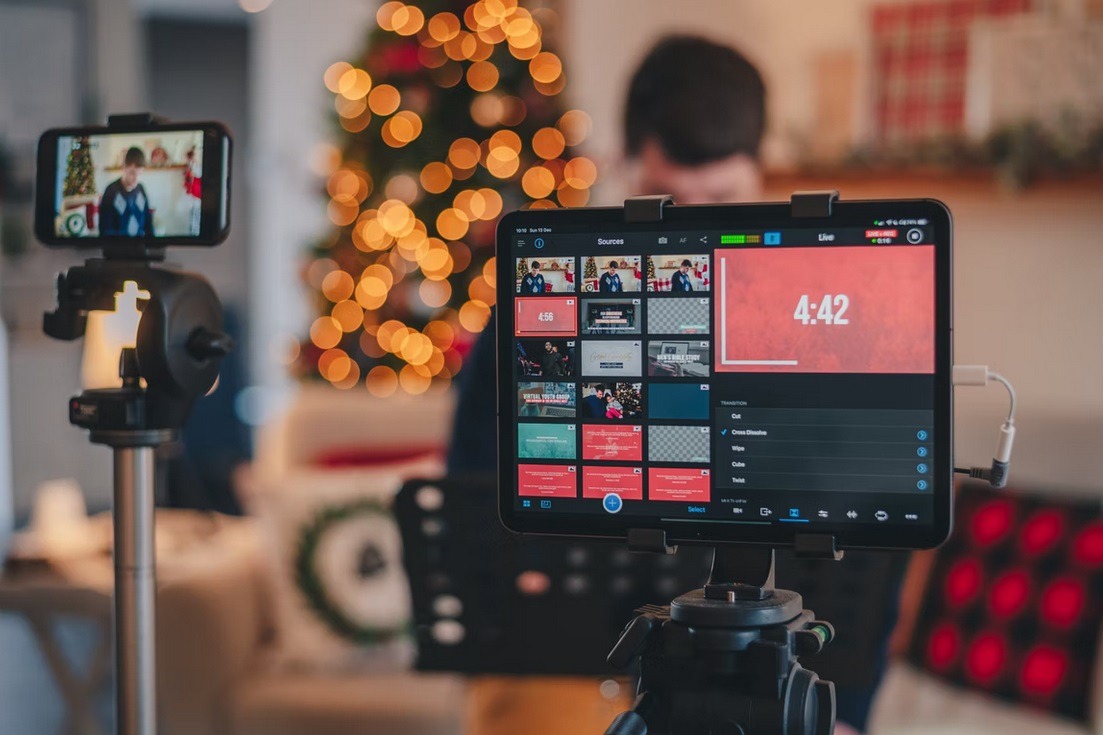Many people worry about live streaming as a means of business because of low resolutions, lag-time, and buffering for the viewers. However, streaming quality is improving with IPTV and OTT apps. Learning how to upgrade your live streaming setup can help you produce better video content.
Companies everywhere employ live event streaming to generate a buzz and bring messages to potential customers. Plus, live streaming for governments is increasingly popular, too.
Why You Should Upgrade to Live Streaming
Live streaming is now an important marketing tool, with more than 47 percent of global viewers streaming live each year. Customers want an authentic experience with the brand and a real-time connection.
Many companies shut down during the pandemic and still want to drive business solutions forward. The best way to do that is through live streams with IPTV and OTT platforms.
Businesses still use social media and other platforms to get their messages across, but they’re often a low-profit endeavor. IPTV and OTT platforms for live streams are generally better, and make sure to learn how to download so player on firestick to maximize their benefits.
How OTT Apps Can Help a Business
Before learning how to upgrade your live streaming setup, you should understand what OTT apps are and how they help companies.
Over-the-top media services are provided directly to the viewers through the internet and can bypass broadcast, cable, or satellite television platforms, which are often the distributors or controllers of the content.
Companies that routinely produce videos to promote their brands should consider OTT apps. They could:
- Reduce Churn Rate – Most people cancel video streaming services because they don’t have the time to watch content. The OTT app allows them to consume it when they’re traveling, at lunch, and waiting in lines or offices.
- Increase Conversions – Your service is more attractive with OTT apps because you enhance the user experience and make the service exciting for subscribers. They can watch content whenever the mood strikes.
However, companies aren’t the only ones that can benefit. Live streaming for governments is also lucrative because these entities can get information to people without using satellites and broadcast networks.
Upgrading Your Live Streaming Setup – What to Do
Here are a few tips to help you learn how to upgrade your live streaming setup:
Invest in High-quality Equipment
The equipment you use makes or breaks your live stream quality. You require a professional-grade set up to be a broadcaster. Generally, 4K or Full HD cameras are ideal.
Though consumer-grade cameras and cell phones are suitable for YouTube, live streaming for governments and B2B broadcasters require the best live stream equipment. There’s nothing you can do to fix poor-quality recordings, so using a high-end camera initially ensures that you capture the image well.
Optimize Live Encoder Settings
Video encoders are used for most live streams. This tool converts the live video into compatible streaming formats, allowing you to transmit it to the streaming platform or stream on-demand to the viewers.
The encoder you choose directly relates to the live stream quality. Here are recommended settings to consider when learning how to upgrade your live streaming:
| Audio Sample Rate | 48 kHz or 48,000 Hz |
| Audio Channels | 2 (stereo) |
| Audio Bitrate | 128 kbps |
| Audio Codec | AAC |
| Encoding Bitrate | Constant (CBR) |
| Scanning | Progressive |
| Keyframe Interval | 2 seconds (2x frame rate) |
| Frame Rate | 25 to 30 |
| Video Codec | H.264 (x264 could work) |
Have a Reliable Internet Connection
Live streaming for governments and businesses requires a high internet speed. The upload bandwidth should be twice (or more) of the broadcast bitrate. You should also perform speed tests, focusing more on the upload speed.
Choose a CDN
It’s best to choose a content delivery network or CDN, which is the proxy server system used to distribute the information. Most hosting platforms already integrate with CDNs.
Choose the Right Resolution
Video aspect ratios and video resolution are also crucial, though choosing the ideal resolution is a trade-off. Even though you want your viewers to see the video clearly, a high resolution doesn’t always mean it’s the best.
Professional broadcasters often use 1920×1080 pixels or 1280×720 pixels.
Why Live Streaming for Governments Is Crucial
Most government entities don’t live stream, and it could be hurting their chances of being heard.
With live streaming for governments, you can:
- Share information fast – Going live allows government officials to give information to the public without them having to tune to a specific channel on the television.
- Increase accessibility and transparency – Live streaming allows the community to stay informed; it’s convenient to watch videos on a phone or laptop wherever you want.
- Boost community engagement – Live chat or polls included with the live stream allows the community to share opinions and concerns while staying connected.
Conclusion
Learning how to upgrade your live streaming setup is the first step toward growing your business or getting information to the constituents as a government official. Everyone wants to consume content in their own way and on their time, and that’s possible with the IPTV/OTT platform.

